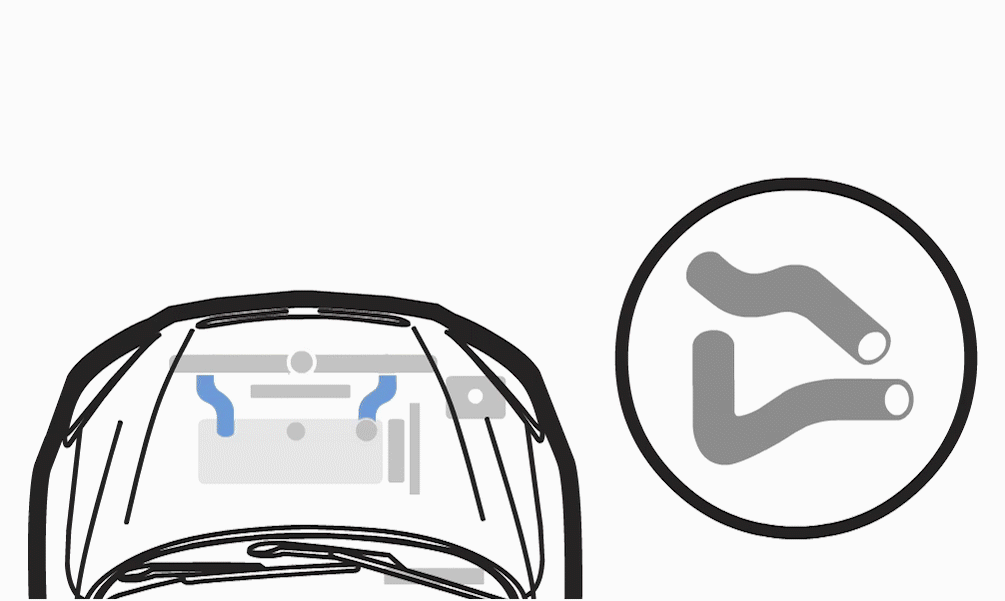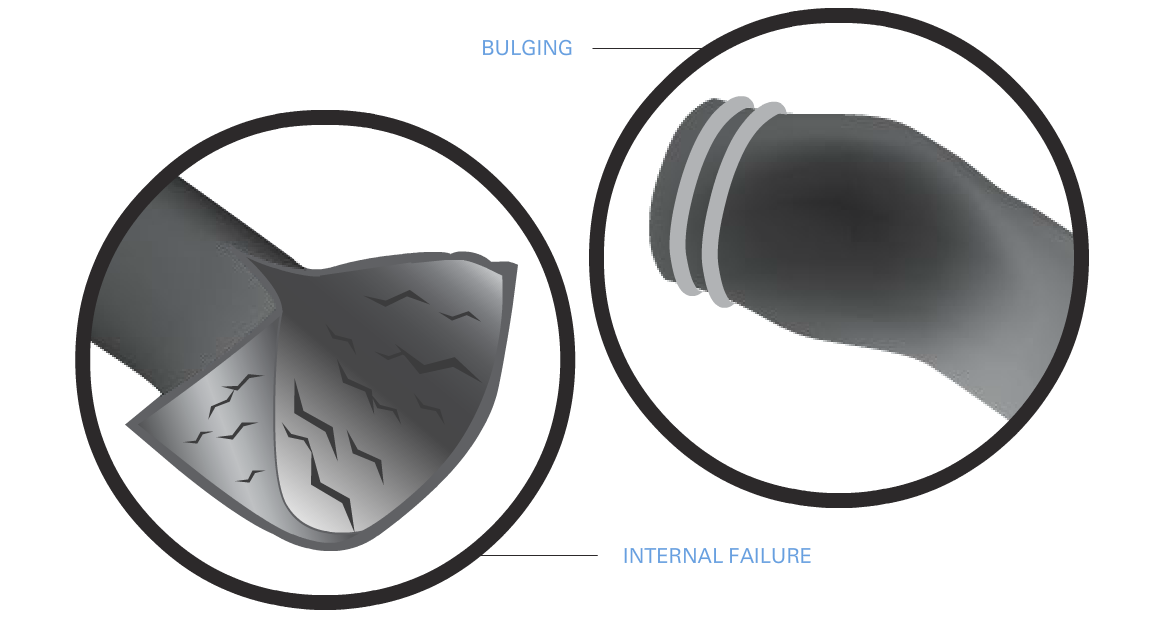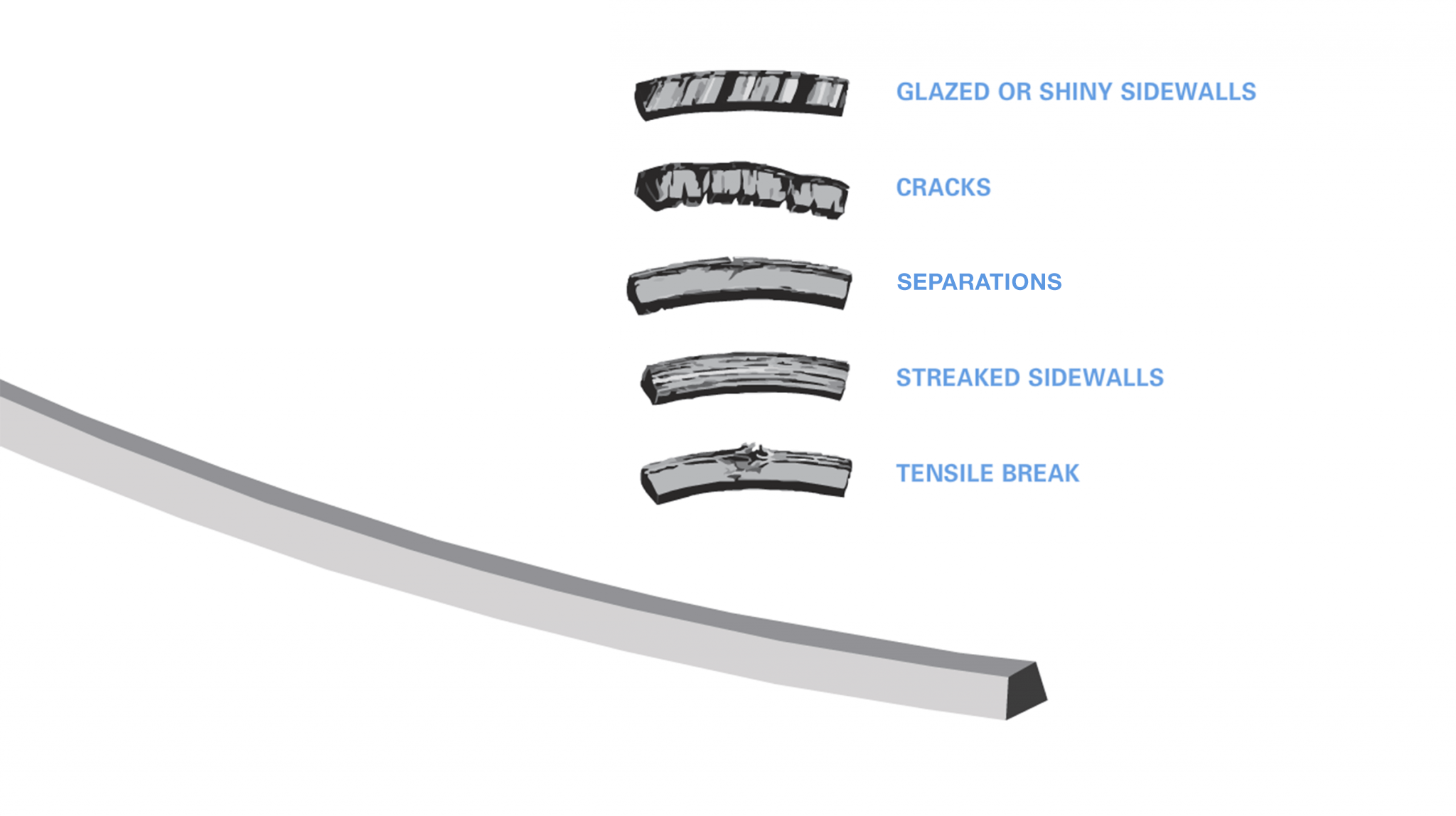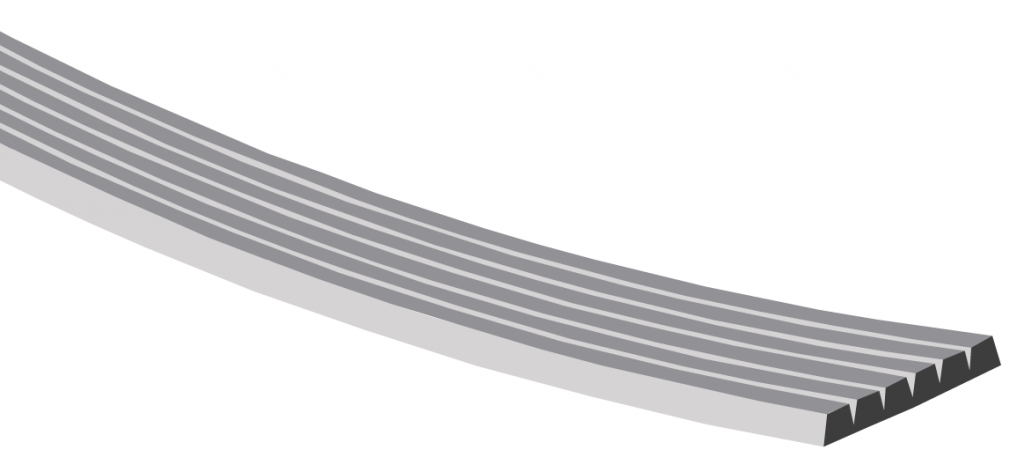3.2 - Hoses & Belts
Hoses are used to connect the components such as the radiator, heater and other circuits. Made of rubber, the hoses must be able to sustain temperature and pressure. Clamps hold the hose to the engine housings and radiator connections.

Hoses
High underhood temperatures and aging cause the hoses to become brittle. These conditions are attached to a high percentage of leaks and overheating.
Most of the time, hoses will not show exterior deterioration, so a thorough inspection is necessary.
When replacing the radiator or servicing any cooling system components, it is important to inspect the hoses and replace as necessary.
During maintenance intervals, the hoses must be inspected. The verification is simple and do not involve more time during maintenance.
- Minor leaks usually occur with time when hose clamps loosen and must be tightened or replaced.
- Drying of the rubber occurs with aging and the deterioration is usually from the inside. Squeezing the hoses can determine its weakness as you will feel internal cracking.
- Swelling of the hoses can be seen near the clamps and have to be replaced immediately.
- Oil or grease contamination from a leaky engine will cause the rubber hoses to swell and become spongy.
Remember that when the engine is hot, the cooling system builds enough pressure to blow a weak hose and damage the engine and other components such as the radiator.

Drive Belts
On some models, the cooling fan is driven by a belt. Cooling can be affected if the belt is worn or loose. Belts come in different sizes and shapes. Drive belts are an important part of the cooling system. Here are a few examples on how to identify worn or damaged belts.

V-Belts
Cracks, glazing, shaffing, worn.

Serpentine
Cracks, glazing, shaffing, worn, including the tensioner wear.
